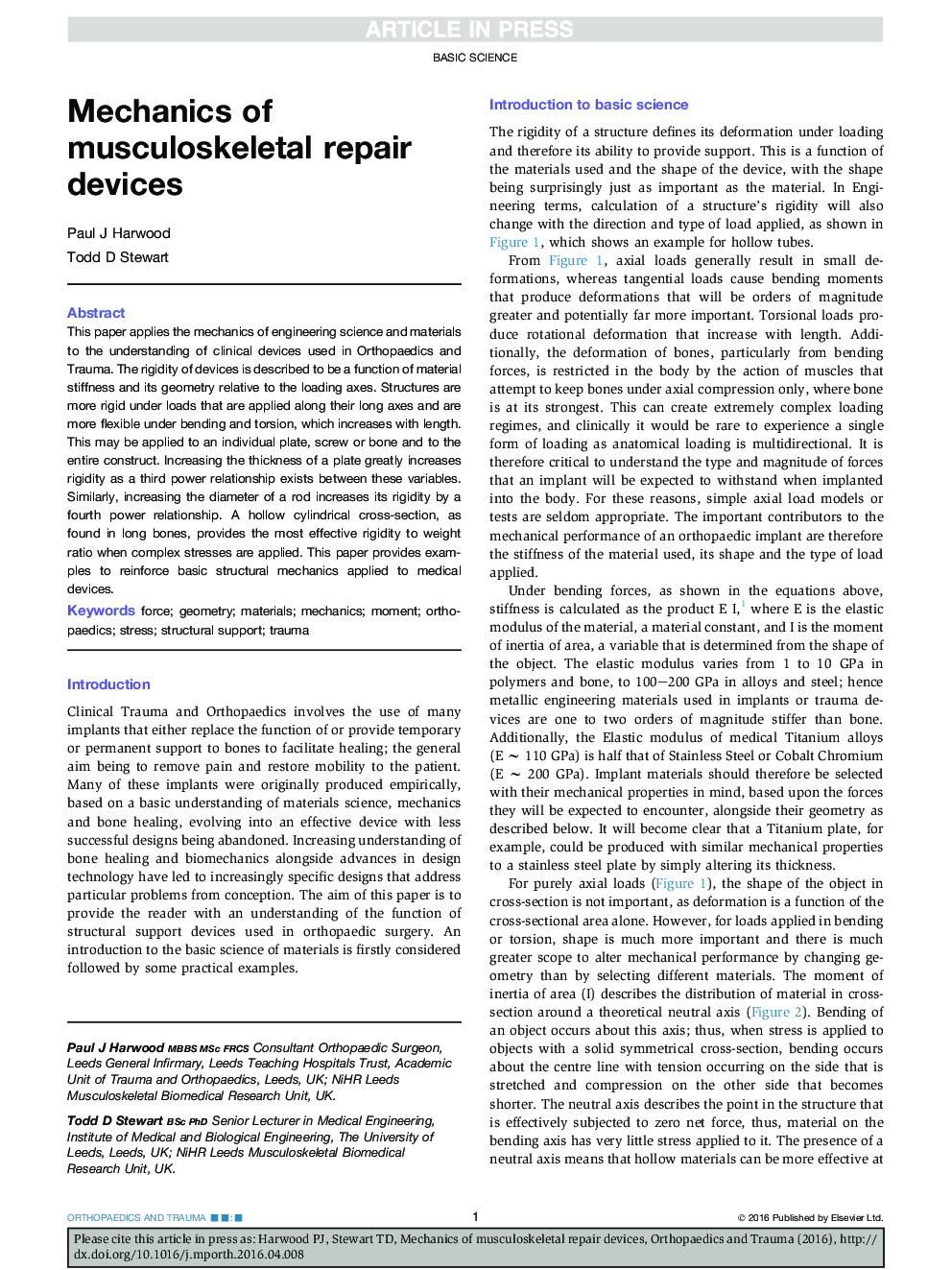| Article ID | Journal | Published Year | Pages | File Type |
|---|---|---|---|---|
| 10176276 | Orthopaedics and Trauma | 2016 | 9 Pages |
Abstract
This paper applies the mechanics of engineering science and materials to the understanding of clinical devices used in Orthopaedics and Trauma. The rigidity of devices is described to be a function of material stiffness and its geometry relative to the loading axes. Structures are more rigid under loads that are applied along their long axes and are more flexible under bending and torsion, which increases with length. This may be applied to an individual plate, screw or bone and to the entire construct. Increasing the thickness of a plate greatly increases rigidity as a third power relationship exists between these variables. Similarly, increasing the diameter of a rod increases its rigidity by a fourth power relationship. A hollow cylindrical cross-section, as found in long bones, provides the most effective rigidity to weight ratio when complex stresses are applied. This paper provides examples to reinforce basic structural mechanics applied to medical devices.
Related Topics
Health Sciences
Medicine and Dentistry
Orthopedics, Sports Medicine and Rehabilitation
Authors
Paul J. Harwood, Todd D. Stewart,
